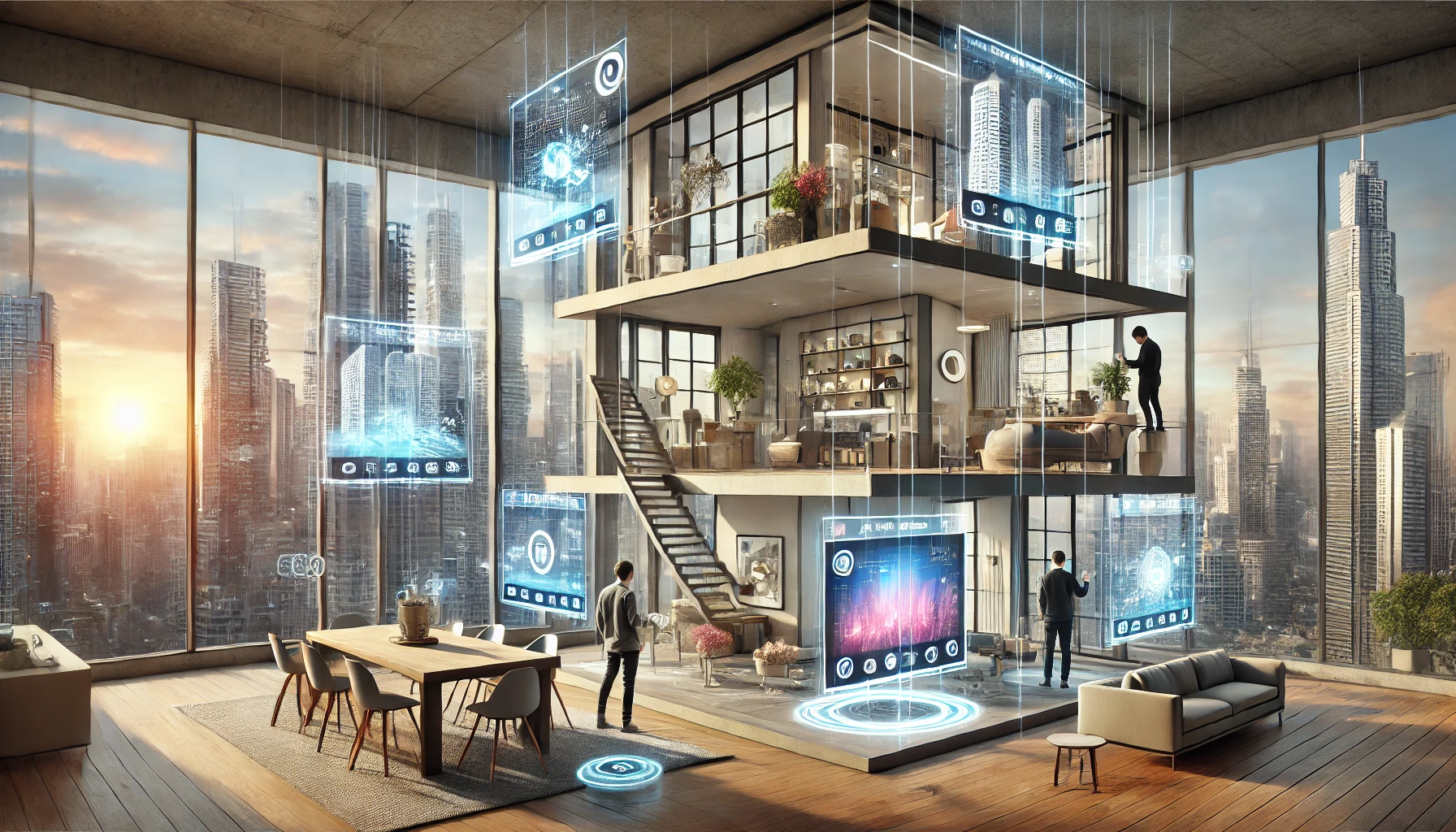In today’s world, augmented reality (AR) is quickly becoming a part of everyday life. From gaming to shopping, AR technologies are reshaping how we interact with the world around us. But one of the most exciting developments of AR is its impact on home design.
Imagine designing your home in real-time, experimenting with layouts, colors, and furniture—all from the comfort of your couch. This is where the concept of an augmented reality house comes into play. AR is bringing home design into a whole new era, blending the digital and physical worlds seamlessly.
Defining “Augmented Reality House”
An augmented reality house refers to using AR technologies to design, visualize, and modify living spaces. Homeowners, architects, and designers can now interact with their homes through digital overlays that enhance real-world environments. With AR, you can see how a new sofa fits into your living room before making a purchase, or how a wall color changes the feel of a room, all in real-time.
Understanding Augmented Reality in Home Design
Basics of Augmented Reality
Before diving deeper into augmented reality houses, let’s define AR. AR overlays digital elements (like images, information, or objects) onto the real world. This differs from virtual reality (VR), which creates entirely new digital environments, and mixed reality (MR), which blends real and virtual worlds but in a more immersive way.
For AR, you’ll typically use a device like a smartphone or AR glasses that utilize sensors, cameras, and software to project digital images into your physical space.
How AR Transforms Home Design
The possibilities of augmented reality houses in design are endless. Imagine this scenario: You’re planning to renovate your kitchen. With AR, you can digitally remodel the space—move cabinets, change colors, and try different appliances—all before lifting a hammer. This real-time design modification gives homeowners the chance to experiment freely, while architects and designers can make data-driven decisions.
Key Features and Benefits of an Augmented Reality House
Instant Visualization and Modification
One of the standout features of an augmented reality house is the instant visualization of design elements. Using AR apps, homeowners can place virtual furniture or change decor, seeing how it fits into their actual space without lifting a finger. Need a quick tweak? You can instantly modify colors, furniture placement, or even the lighting.
Personalized Design Experience
With augmented reality houses, design becomes deeply personal. You can tailor your space to match your tastes, adjusting details like wall colors, flooring types, and furniture styles with a tap. This level of personalization allows for greater creativity and ensures your home truly reflects your personality.
Enhanced Collaboration and Decision-Making
AR encourages collaboration. Architects, designers, and homeowners can work together by overlaying 3D models and real-time changes to the physical space. This digital collaboration ensures that everyone is on the same page, making the decision-making process faster and more accurate.
Cost-Effective and Time-Saving
By using augmented reality houses for visualization, you can catch potential design flaws early, saving both time and money. No more wasted resources on furniture that doesn’t fit or designs that aren’t practical. Additionally, with AR, you can create prototypes digitally, speeding up the overall design process.

Real-World Applications of Augmented Reality in Home Design
Virtual Staging and Furniture Placement
Have you ever struggled with furniture placement? AR apps let you virtually stage your home by placing digital furniture and decor in your space. This allows homeowners to experiment with layouts and design ideas before committing to any purchases. It’s a simple yet powerful way to see how different pieces fit within your home.
Architectural and Interior Design Visualization
For architects, AR is a game-changer. With augmented reality houses, professionals can create highly detailed models of homes, showcasing materials, dimensions, and even lighting effects. AR helps visualize every aspect of the home, from room layouts to the smallest design details like wallpaper textures or furniture finishes.
Home Renovation and Remodeling
Thinking of renovating? AR helps homeowners visualize potential changes, from knocking down walls to updating the kitchen. It gives them a real-time preview of how their changes will look, preventing unpleasant surprises once construction begins.
Smart Home Integration with AR
The future of smart homes is closely tied with AR. Imagine controlling your smart lights or adjusting the temperature by simply tapping on a virtual display projected in your living room. AR houses make interacting with smart home systems intuitive and immersive.
Challenges and Considerations
Technical Limitations
While augmented reality houses are revolutionary, there are technical hurdles to consider. AR apps require advanced devices like smartphones, AR glasses, and high-quality sensors. Battery life and hardware limitations can also be a concern, particularly for more complex AR experiences.
User Experience and Adoption Barriers
Not everyone is familiar with AR technology. There’s a learning curve involved, and older populations or people with limited tech experience may find it challenging. Accessibility and inclusivity are key areas where improvements are needed.
Privacy and Security Concerns
As with any technology that collects real-time data, there are privacy and security risks. Homeowners need to be cautious about how their data is used, especially when integrating AR with smart home systems. Ensuring that AR technologies are secure will be crucial moving forward.

The Future of Augmented Reality Houses
Advancements in AR Technology
The future of augmented reality houses looks promising, with innovations such as AR glasses, haptic feedback, and AI integration coming into play. These advancements will make AR even more immersive and user-friendly.
Expanding the Boundaries of Design
AR is not just about designing homes; it’s about living in them. Future AR houses may allow users to experience a fully interactive, digital environment. Combining AR with virtual reality (VR) could result in even more dynamic, customizable home experiences.
Sustainable and Efficient Homes
AR is also making homes more eco-friendly. By visualizing energy-efficient layouts and sustainable materials, AR can help create homes that are not only smart but also environmentally responsible. Energy-efficient design powered by AR can contribute to the growing trend of green architecture.
Conclusion
Recap of the AR House Concept
Augmented reality houses are transforming the way we design and interact with living spaces. This technology is revolutionizing home design by offering real-time customization, collaboration, and interactive experiences.
The Future Is Digital and Interactive
As AR technology continues to evolve, it will become an increasingly important part of home design, offering more personalization, efficiency, and sustainability.
Final Thoughts
Now, it’s your turn. Imagine how your dream home could look using augmented reality—the possibilities are endless. Explore AR apps and start experimenting with your own augmented reality house!
To more information about Virtual Reality, Technology, AI and so on visit: https://www.techserps.com/
FAQs
1. What is an Augmented Reality House?
An augmented reality house uses AR technology to visualize and design living spaces in real-time. Homeowners and designers can modify elements of their home, such as furniture placement, colors, and layouts, before making physical changes.
2. How Does AR Work in Home Design?
AR in home design involves overlaying digital elements onto real-world spaces. Using AR apps, homeowners can see virtual objects or changes, such as furniture or wall colors, in their actual home before committing to them.
3. What Are the Benefits of Using AR for Home Design?
Using AR allows for instant visualization, real-time modifications, personalized designs, and enhanced collaboration. It also helps save time and money by preventing design errors before construction begins.
4. Can AR Help with Home Renovations?
Yes! AR is perfect for visualizing renovations, from adding walls to changing the flooring. Homeowners can see how the renovations will look in real-time, helping them make informed decisions.
5. Are There Any Privacy Concerns with Augmented Reality in Homes?
AR apps collect real-time data, raising concerns about privacy. Homeowners should ensure that their data is secure and understand how their information is being used, particularly when integrating AR with smart home devices.



